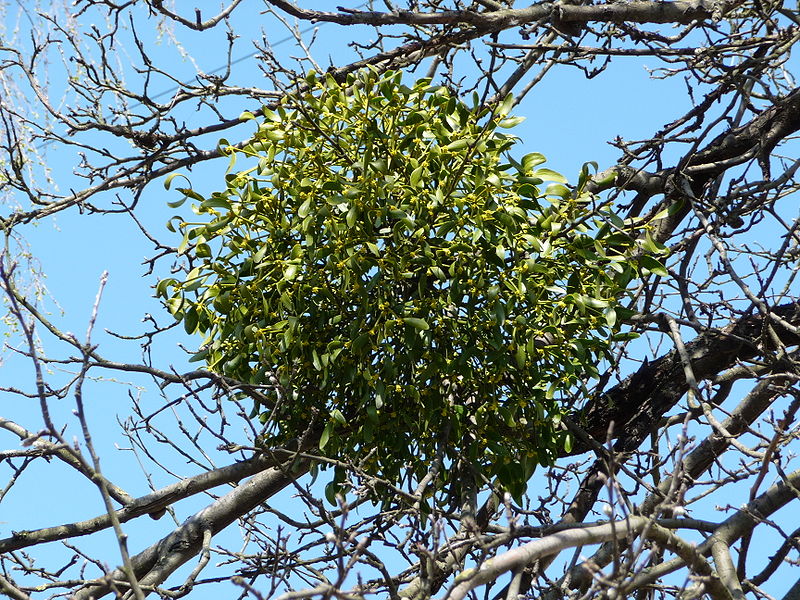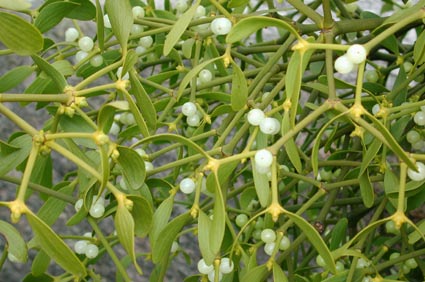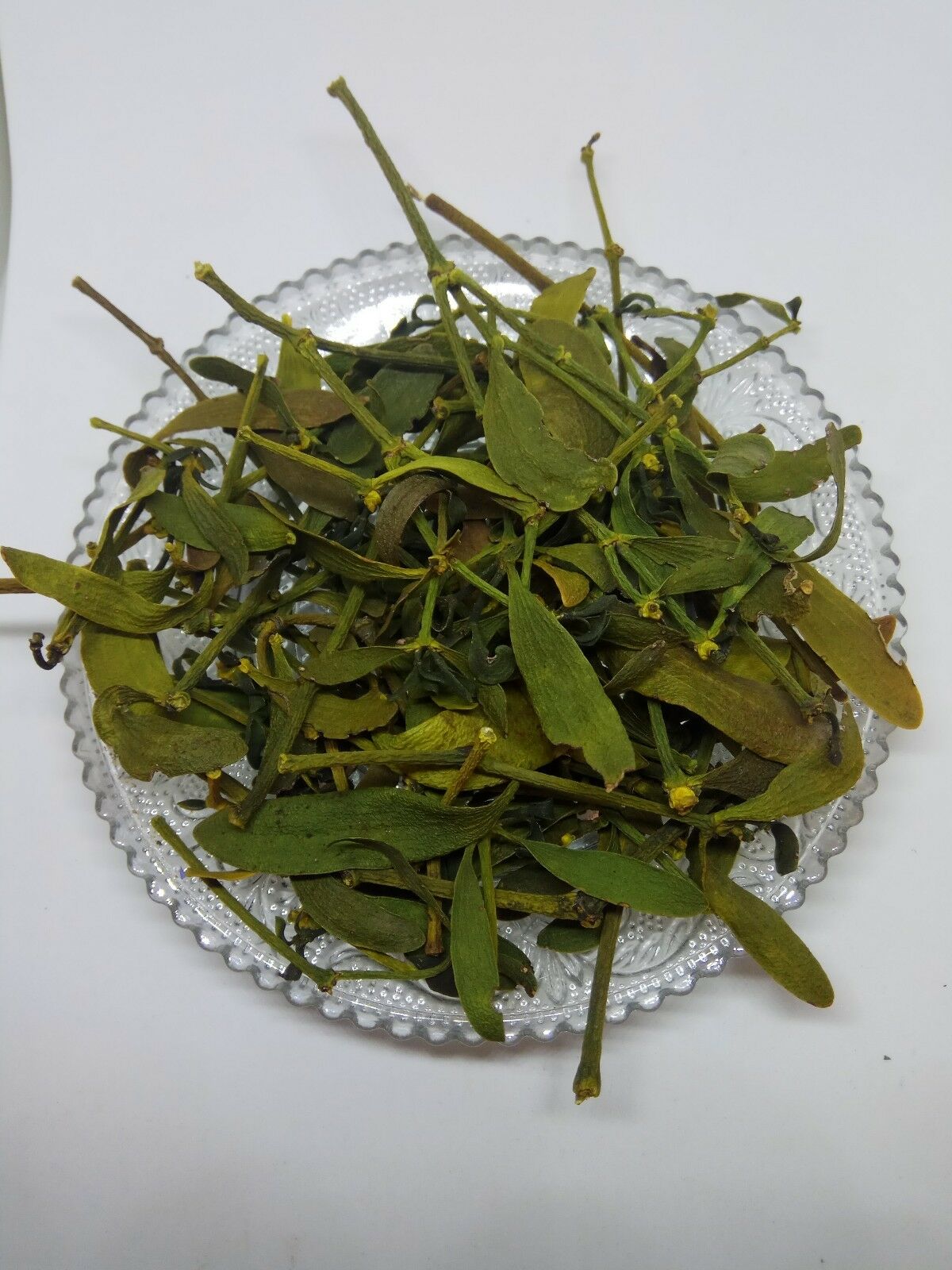- Benign hypertension- use with
Crataegus
and
Tilia.
[1]
[1] British Herbal Pharmacopoeia 1983
Published by the British Herbal Medicine Association ISBN 0 903032 07 4.
[2] Herbal Materia Medica Course Notes For Diploma of Naturopathy and Diploma
of Herbalism Students by Lydia Mottram.
[3] Potter's New Cyclopaedia of Botanical Drugs and Preparations R.C.
Wren Revised by Elizabeth M. Williamson and Fred J Evans. First published in
Great Britain in 1988 and reprinted in 1989 and 1994 by the C. W. Daniel Company
Limited. 1 Church Path, Saffron Walden Essex. Published 1988 Printed and bound
by Biddles, Guildford ISBN 085207 1973.
Images
1.
commons.wikimedia.org
by
George
Chernilevsky Public domain
2.
herbspice.guide
3.
en.wikipedia.org
by
tjabeljan
CC BY 2.0
4.
ebay.com.au
Glycoproteins- the mistletoe lectins I,II and III and viscumin.
[3,4,5]
Polypeptides- the viscotoxins I, II, III and IVB. Viscotoxin- an albumin.
[6]
A cardioactive polypeptide-carbohydrate.
[1]
Flavonoids- usually quercitin-derived and dependent on the host tree to some extent.
[7]
Phenocarbolic acids- caffeic and gentisic.
[7]
Polysaccarides in the berries, one of which is viscic acid.
[8,9]
Alkaloids in a Korean variety
V. album coloratum. Traces of alkaloids.
Lignans- syringin, syringaresinol 4,4''-diglucoside (= eleutheroside).
[10]
A bitter principle. Mucilage. Oleanolic acid.
[1]
Tannin. Triterpenoid sapogenin.
[1] Choline
and Histamine.
[1]
References
[1] British Herbal Pharmacopoeia 1983
Published by the British Herbal Medicine Association ISBN 0 903032 07 4.
[2] Herbal Materia Medica Course Notes For Diploma of Naturopathy and Diploma
of Herbalism Students by Lydia Mottram.
[3] Franz, H. et al. (1981) Biochem. J. 195, 481
[4] Luther, P. et al. (1980) Int. J. Biochem. 11,
429
[5] Olsnes, S. et al. (1982) J. Biol Chem. 257, 1371
[6] Woynarvski, J. M.
et al. (1980) Hoppe-Seyglers Z. Physiol. Chem.
361 (10), 1525 and 1535
[7] Becker, H. and Exner, J. (1980) Z. Pflanzenphysiol. 97
[8] Muller, J. (1962) Germ Offen. DE 1, 130, 112
[9] Bloksma, N.
et al. (1982) Planta Med.
46, 221
[10] Wagner, H.
et al. (1986) Planta Med. (2), 102

 Viscum
album. European
mistletoe,
The Golden bough, Birdlime mistletoe
Family: Loranthaceae
Viscum
album. European
mistletoe,
The Golden bough, Birdlime mistletoe
Family: Loranthaceae


